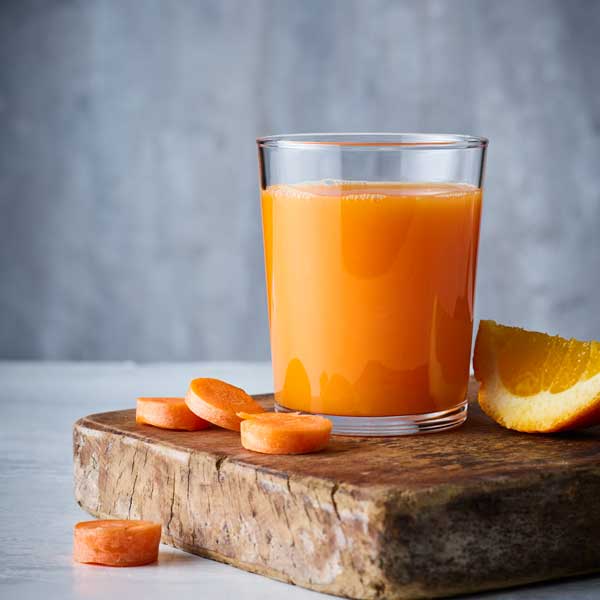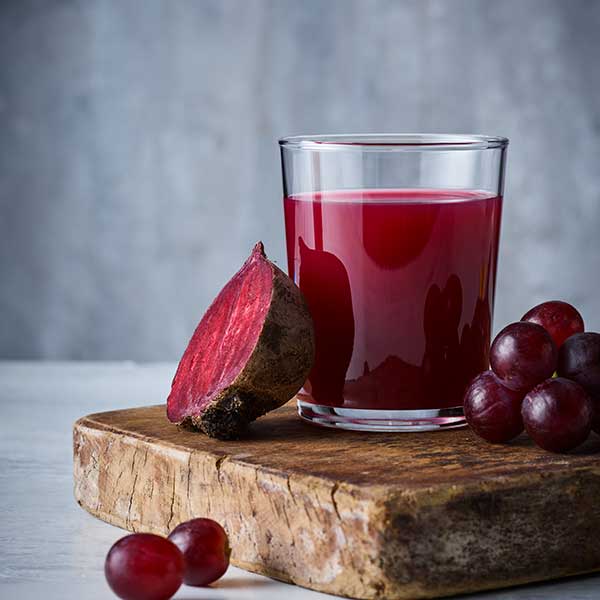Imagine a beverage created out of local, cost-effective vegetables that consumers seek for its great taste as much as its health properties. Now imagine that this beverage lasts longer on the shelf than most fresh juices and is appealing and appropriate for every occasion: as an accompaniment to any meal, a snack on its own, or simply a refreshing beverage.
The process of fermentation can make all of this possible by taking vegetable juices and transforming them, yielding products that are more easily digested, more nutritious, and higher in acidity, resulting in a more complex flavor and a more enjoyable product. At Chr. Hansen, we have spent the last 150 years honing our expertise in the art of fermentation, and this article is a part of a series that aims to inspire new ideas for members of our industry. We hope to inspire customers and industry members alike to consider this emerging category in the fermented beverages space when considering new product ideas for a consumer base increasingly interested in options that promote and protect the health of themselves and their families.
Fermented carrot juice
- Carrot juice contains 50% less sugar than orange juice
- In-season, local carrots are a low-cost input that pack a serious health punch
- Fermenting carrot juice transforms its pH, flavor and texture
- Fermented carrot juice can be an ideal product for producer and consumer alike
Consumers are increasingly focused on protecting their health, reducing their sugar intake and supporting wellbeing through dietary choices
More interested in supporting their health than previous generations, Millennials are not only better-informed about healthy choices than other consumer segments, but they are increasingly the designated shoppers of their households, exerting a significant influence over what their family members consume. Research suggests they are also more interested in all-natural ingredients than their parents, prioritizing options with short ingredient lists and gravitating toward ingredients they recognize and can pronounce.
"The last several years have shown us that for consumers, health is everything"
Anne-Claire Baiquis, Commercial Development Manager
With the emergence of COVID-19 in 2020, markets around the world saw a spike in trends toward healthier behaviors, and reducing sugar and alcohol consumption are top priorities for many health-conscious consumers. “The last several years have shown us that for consumers, health is everything,” says Anne-Claire Baiquis, Commercial Development Manager in Wine and Fermented Beverages. “Consumers are moving away from sugary drinks containing lots of ingredients, replacing them with juices and smoothies made just from fruits and vegetables, as well as options such as coconut water – all pure beverages derived directly from nature. On the food front, we see this trend as frozen and cooked foods are taking a backseat and wholesome, ready-to-eat options, are coming to the fore.”
Research shows that concerns about sugar content in juice leads to restricted consumption: in Europe, more than half of consumers limit the amount of juice they consume due to concerns about sugar content. That said, research has also shown that many consumers feel naturally-occurring sugars, such as those found in fruits and vegetables, are not a health concern, suggesting that the fewer ingredients, the greater the appeal1.
Fermented beetroot juice
- Beetroot is high in protein, minerals, vitamins and folic acid
- Fermenting beetroot juice transforms pH, flavor and texture
- Fermented beetroot juice is an indulgent, shelf-stable beverage free from earthy off-flavors
Market trends toward healthier choices present both challenges and opportunities for producers eager to innovate in new areas
Vegetable juices offer producers the chance to extend their range, offering a healthy, indulgent, low-sugar beverage that, once fermented, has a taste that is complex and unique enough to be suitable for any occasion. For producers already working in beer brewing or winemaking, fermented juices represent an opportunity to explore a new category without significant additional investment in equipment or inventory. For some, vegetable juices could be a way to reduce their food waste by converting leftover, or even end-of-season inventory into something delicious. Winemakers or brewers can even use their existing vats to ferment the juice at the end of the season.
Vegetables used in juices – such as beetroot, carrots, celery, kale, black (purple) carrots, cabbage, cucumber and spinach – tend to be low-cost inputs, especially when local and seasonal sources are utilized, and they yield a value-add product whose higher price point can offer producers a significant margin.
Up to now, vegetable juices have failed to gain traction in the marketplace due to a variety of factors. Unlike fruit juices, which are naturally tart and acidic, those made from vegetables are low in acidity, resulting in an earthier flavor and a shorter shelf life that can make scaling production difficult. Seasonal crop variation can result in batch-to-batch irregularities that make it hard to streamline production. Without the process of fermentation – or added ingredients such as lemon or ginger – vegetable juices also tend to include off-flavors due to their earthy, herbaceous notes that can be off-putting, even to the most ardent vegetable lovers.
Fermented vegetable juice
- Low acidity and herbaceous flavors in vegetables can lower their appeal
- Fermenting vegetable juices lowers pH, transforms flavor and removes off-flavors
- With fermentation, consumers can enjoy an indulgent experience appropriate for any occasion, all while getting the health boost they crave
Fermenting vegetable juices offers producers the chance to extend their range and delight their customers, while consumers enjoy great taste and a welcome health boost
Humans have been fermenting food long before they understood the science involved, or even realized the role that living microbes played in transforming the nutritional profiles of their food, preventing spoilage and keeping it fresh for longer. Fermentation is a chemical process where bacteria, yeast or a combination of these microorganisms break down food into new components, often lowering pH and altering the flavor of the resulting product.
The fermentation of juice can be initiated by lactobacilli bacteria or by yeast, depending on the desired outcomes. By adding these microbes to vegetable juice, producers can transform a lackluster product into one whose taste and mouthfeel are elevated, offering an indulgent treat special enough for sophisticated occasions that can be enjoyed alone or with a meal. Fermented juices can offer the following benefits:
- Bioprotection: The lower pH that results from fermentation creates a more hostile environment for pathogens to proliferate, protecting the juice and keeping the product fresher for longer.
- Digestibility: Because fermentation begins a kind of "pre-digestion" of the juice, the fibers and nutrients in fermented juices are broken down before the juice is consumed. This makes them more easily absorbed, reducing the chances of digestive upset and enhancing an enjoyable consumption experience.
- Nutrient availability: Fermentation increases the content of B and C vitamins in juice, as well as breaks down the lectins, oxalates, goitrogens, phytoestrogens (also known as "anti-nutrients") that can inhibit absorption of vitamins and minerals.
- Gut health support: The lower pH of fermented juices bolsters the acidity of the digestive tract, promoting optimal functioning and overall health.
- Flavor: With fermentation, the outcome of combining ingredients is truly more than the sum of its parts. This means that the flavors fermentation can create are genuinely new and unique: fermented juices are often fruity, refreshing, complex and indulgent, making the beverage a versatile one that can be tailored to suit any occasion.
An introduction to Chr. Hansen’s solutions for fermented juices
At Chr. Hansen, our teams of scientists spend years working with strains of yeast and bacteria to understand their modes of action and apply them to the most appropriate scenarios. After years of research, we are proud to introduce two lines of products that can be used to ferment juices, depending on a producer’s specific needs, recipe and desired outcomes:
Our SMARTBEV™ Harvest range utilizes lacto-fermentation to contribute freshness and stability to fruit juices, helping them to undergo rapid acidification and offering sour, buttery, acetic and rhubarb flavor notes. By consuming glucose, sucrose and fructose, Harvest LB-1 and LB-2 also lower the acidity of juices, resulting in a fresher taste and a longer shelf life. Harvest LB-1 and LB-2 are equally effective at fermenting juices but will yield slightly different results when it comes to taste. Trials can be performed to help producers choose which culture best fits the results they are after.
Our Pichia kluyveri yeast strains, used in both our SMARTBEV™ NEER® and VINIFLORA® FrootZen® lines, originates from fruit and unlike the Harvest range, consumes only glucose and fructose. This yeast strain is also unique because its low fermentative activity and preference for O2 produces no ethanol in the final product. Fermenting with Pichia kluyveri produces high levels of esthers in wines and juices, lending powerful fruity aromas to the final product. Pichia kluyveri is also the first-ever "frozen yeast" to be introduced to the market, reducing friction and streamlining production. Both SMARTBEV™ NEER® and VINIFLORA® Frootzen® can be used to ferment juices, and trials can be conducted to determine which of the two yields the desired flavor profile in a given recipe or substrate.
“We are excited about the opportunities our solutions bring to the fermented juice category,” says Baiquis. “This space is still in its early stages of growth and offers so much potential. We hope that our cultures and yeasts, brought to market through decades of research and experimentation, help producers share the benefits that these beverages can offer to those who enjoy them.”
Let’s ferment together: work with us and experience what can be possible
At Chr. Hansen, we work to grow a better world. Contact us to learn more about how our products can help you extend your range and try a taste of the fermented juices that our products make possible.
References
1 Mintel. “A Year of Innovation in Juice & Beverage Concentrates, 2021.” January 2021.






